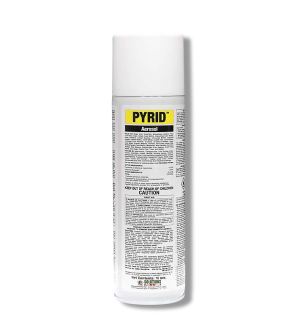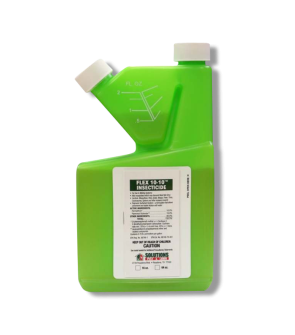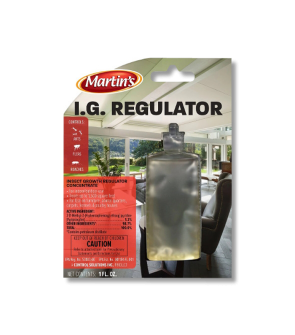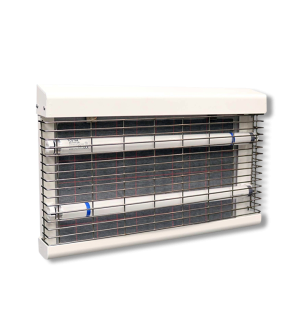Maggot Control
Most Effective Products
Maggot Control: How to Get Rid of Maggots
This page is an expert guide on how to kill maggots using the products and methods suggested by our experienced pest control specialists. Follow this guide and use the recommended products and we guarantee you will be successful in getting rid of maggots.
Maggots are a nightmare come true for almost everyone. They are filthy and slimy and not something you would ever want to see in your kitchen or anywhere else on your property. A maggot infestation can cause a lot of problems and you have to eliminate them entirely before they spread to other areas of the home.
If you've been scouring the internet looking for a solution to your home maggot infestation, our comprehensive guide below will lay out what maggots are, where do maggots come from, how to inspect for them, how to properly treat them and how you can prevent a maggot infestation from happening again.
Identification

The first thing that you should do before carrying out any pest control plan is to properly identify the pest you are dealing with and make sure they are maggots. Incorrect identification can lead to using the wrong treatment methods, wasting time and money. Below we will outline what maggots are, what they look like, and where maggots come from.
- Maggots are the larvae of flies. Around homes, maggots will most commonly be the larvae of either house flies or blow flies. The maggot larvae thrives in dirty and unsanitary conditions and can wreak havoc on anyone who ingests them through unhygienic food.
- When a fly lays eggs, they turn into maggots and hatch within a period of 7-20 hours. When the larvae hatches, maggots emerge, and they start to feed off anything that comes their way especially rotting and unsanitary things.
- Maggots look like tiny cream-colored worms and the largest can reach up to 20mm in length or 3/4th of an inch long.
- Maggots do not have any legs, but they do have two little hooks that serve as their mouthparts for feeding.
- Maggots and flies can become a problem any time of the year especially during the spring and summer when flies are more active.
- Maggots live for about 5 to 6 days in this phase before turning into pupae and eventually transitioning into adult flies.
Use the image and the description above to properly identify Maggots on your property. If you are not sure, contact us and our representative will assist you with the correct identification of your pest problem.
Inspection

Maggots don't just show up out of nowhere; they show up for a reason. Flies become attracted to some rotting material or spoiled food in your home and use that as a breeding ground to lay their eggs which hatch to become maggots. A detailed maggot inspection will help you pinpoint where the maggots are gathering and where you should focus your treatment.
Where To Inspect
Maggots are commonly found in areas where there is rotting food, organic material, or decaying matter and filth. In kitchens, they can be found in pantries in spoiled food, pet food, on rotting fruit or produce that has been laid out. Maggots can also be found in garbage cans that aren't sealed or the trash hasn't been tossed out for some time.
What To Look For
You should look for maggots themselves or the appearance of adult flies. Maggots will appear in the form of small white worms in the house wiggling about in the food or filth they are found on. Flies will be hovering around filthy areas like garbage and feces and will breed and lay their eggs.
You should also look around your perimeter for entry points that flies could possibly use to gain access into your home (broken door and window seals, voids in the wall, cracks and crevices). Note these areas as they will be the areas where you will direct your treatment.
Treatment
Once you have confirmed maggot activity, it is time to begin treatment. Treatment will focus on getting rid of maggots along with getting rid of adult flies. Once you get control of flies, you will get control of maggots.
Before applying any of our recommended products you should first practice IPM (integrated pest management), which includes sanitation and modifications to your kitchen to discourage maggot activity.
Step 1: Sanitize Your Home

If you have found maggots around, it's likely you have found the source of why they are there. Decomposing food and filth are the main reasons you'd find maggot infestations in the home so you need to find that filth source and throw it out and then perform a thorough sanitation.
The main area to focus on is usually the kitchen since this is commonly where food can spoil and trash can pile up, which is where flies and maggots will gather. Clean your tabletops and counters, mop your floors, eliminate any moisture sources, toss out any old food and take out the trash. This is most important of all the steps because no amount of pesticide products will get the job done if your kitchen is not sanitized.
For maggots you have noticed in your garage or basement, sweep and mop the area well and remove any decaying filth and toss immediately in a sealed trash bin with a tight-fitting lid outside of the home. If the maggot problem is primarily outdoors, clean up the areas where you have seen flies such as around spoiled dog food, dropped food, pet feces and other such filth.
Step 2: Apply Flex 10-10 and Martin's IG Regulator

Once your home is sanitized, you should treat the maggots with a combination of a synthetic pyrethroid product called Flex 10-10 and Martin's IG Regulator. Flex 10-10 is a professional grade liquid insecticide labeled to treat flies and many more pests while Martin's IG Regulator is an insect growth regulator that disturbs the life cycle of flies and maggots by hindering the development of eggs, larvae and adults. This combination will kill maggots immediately and make it so flies can't reproduce.
Both Flex 10-10 and Martin's IG Regulator can be used indoors and outdoors and can be mixed together in a handpump sprayer for localized applications. For Flex 10-10, use 6.4 fl. oz. per 1 gallon of water. For Martin's IGR, use 1 oz. per gallon of water. A solution made with Flex 10-10 and Martin's IG Regulator can treat up to 1,500 sq. ft.
To use a pump sprayer, fill the sprayer halfway with water and then add the appropriate amount of Flex 10-10 based on square footage of your treatment area. Fill with the remaining half gallon of water, close the sprayer lid and shake to mix the solution. Once well mixed, add the appropriate amount of Martin's IG Regulator and agitate once more. Pump your sprayer a few times to product a low-pressure spray and you are ready to apply.
- When spraying for maggots indoors, focus treatments around fly resting spots and entry points. This includes doors, windows, along windowsills and on surfaces around the trash can.
- For outdoor maggot control, spray ornamental plants, soil or mulchbeds where you have seen fly and/or maggot activity. You should also spray fly resting spots around doors, windows, trees and trashcans.
Step 3: Apply Pyrid Aerosol
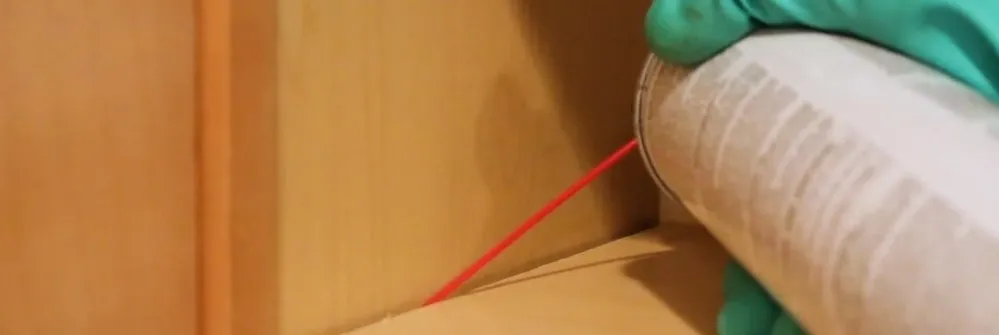
To kill maggots or flies found in tighter spaces or structural voids, we recommend using Pyrid Aerosol. Pyrid is an pyrethrum insecticide that is labeled to kill flies and comes with a straw applicator tip for crack and crevice treatment. Pyrid does not have a residual and is used instead to directly spray pests, delivering a quick and lethal knockdown.
To use Pyrid Aerosol, attach the straw applicator tip to the Pyrid nozzle and apply to noted tight spaces and crevices. You could also use Pyrid Aerosol without the nozzle to treat open areas as a space spray such as above trash cans.
Step 4: Monitor Fly Activity with Professional 1x2 Fly Light Fly Trap

To monitor fly activity around the home to prevent them laying eggs and forming a new generation of maggots, install the Solutions Professional Fly Light. When powered on, flies will be lured by the UV light from the trap and get stuck on the glueboards.
The Professional 1x2 Fly Light Trap is very easy to install. Mount the trap on a wall in an area of high fly activity such as a porch area, garage, or patio and plug it into an outlet and it will trap flies right away.
Prevention

After you have treated and got rid of Maggots from your property, they may come back if you have not implemented preventative measures to keep them away. As we mentioned before, Maggots only appear when there are no proper hygiene standards maintained in an, be it at home in the kitchen, in a garage, a yard, or at a restaurant. Perform the following on a regular basis to prevent future encounters with Maggots.
-
Clean all your tabletops and kitchen counters.
-
Mop all the floors with an antibacterial cleaner.
-
Seal all your food in airtight containers.
-
Seal your garbage bags and cans properly to ensure nothing breeds or comes inside.
-
Seal all cracks and crevices with caulk to limit fly points of entry
-
Finally, make followup applications of Flex 10-10 monthly and Martin's IG Regulator every 6 months to keep Maggots and flies away all year round.
Key Takeaways
What are Maggots?
- Maggots are the larvae stage of flies and are cream-colored wiggly worms with an insatiable appetite.
- Maggots often invade kitchens and yards when there is rotting food or decomposing trash around. Flies view these areas as a perfect breeding ground to lay their eggs.
How To Get Rid of Maggots From Your Yard
- Remove or clean up the filth source in your yard to greatly reduce maggot and fly activity.
- Mix a combination of Flex 10-10 Insecticide and Martin's IG Regulator at a rate of 1 finished gallon per 1,500 sq. ft. to your yard to spray on flies and maggots.
- Spray ornamental plants, bushes, mulch beds, and anywhere else you have seen fly and/or maggot activity. You should also spray typical areas where flies land or where maggots are gathered such as around doors, fencing windows, trees and garbage cans.
How To Get Rid of Maggots In Your Home, Kitchen, Garage, etc.
- It is important to conduct a thorough cleanup of your home interior to remove the breeding source and discourage flies and maggots from arriving.
- Apply the Flex 10-10 and Martin's IG Regulator mixed solution in areas of your home to kill both fly maggots and flies, putting a halt to the infestation.
- Install the Professional 1x2 Fly Light Trap to lure and capture invading flies to stop their egg-laying.
- Use Pyrid Aerosol to directly kill spotted flies and maggots either in open areas or hiding in cracks and crevices.
Preventing Maggot Reinfestation
- Maintain a regular cleaning routine of your home and yard. Clean up and throw away rotting food, trash and pet feces.
- Seal as many entry points as possible with caulk to limit ways flies can get indoors to breed and lay maggot eggs.
- Make preventative applications of Flex 10-10 and Martin's IG Regulator at least every three months for continued protection against maggot infestations and fly invasions.

